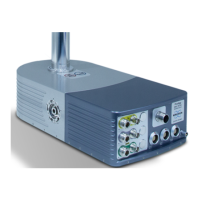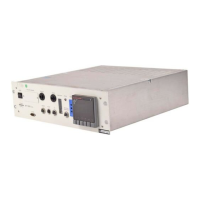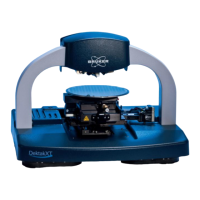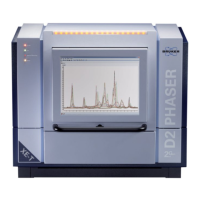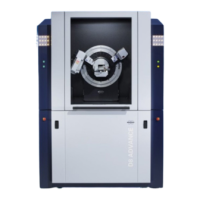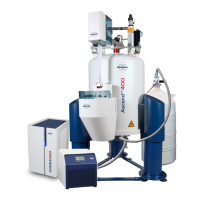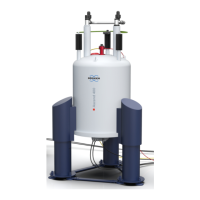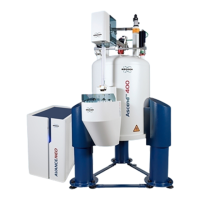CryoProbe User Manual BRUKER 71 (107)
Troubleshooting 7
7000000
See also the Troubleshooting chapter in the Installation Manual.
Read "Safety" on page 7
before manipulating the CryoProbe System!
WARNING: Do not manipulate tubes, valves, or the like on a working Cryo-
Probe System. The helium gas pressure in the running system can go up to
30 bar (above this, the safety valves will release excess pressure). A significant
gas pressure of about 17.5 bar may be present in some system components even
when warm, switched off, and disconnected.
CAUTION: Do not open the CryoProbe! Without appropriate tools, the Cryo-
Probe can easily be damaged in an attempt to open it.
There are no repair actions that could be performed by the user.
For troubleshooting, there is usually no advantage in taking the CryoProbe out of
the magnet except for those cases where it is obviously necessary, e.g. to remove
dirt from the sample cavity.
Emergency procedures 7.1
0
Emergency Off 7.1.1
Main switch on CryoCooling Unit front
The rotary main switch on the CryoCooling Unit front (see "Control indicators on
the CryoCooling Unit front" on page 19) acts as an ‘EMERGENCY OFF’ for the
whole CryoProbe System. Its major consequence is that all units inside the Cryo-
Cooling Unit are disconnected from mains.
When to use
If time permits,
- check the system messages in the CryoTool on the laptop. Usually, the
CryoController handles errors and there may be no need for an E
MERGEN-
CY OFF.
- consider if pressing
WARM UP or COOL DOWN could resolve the situation.
Imaginable situations for an ‘E
MERGENCY OFF’ are earthquakes, open gas leaks,
intimidating noise from pumps or compressors, a series of pneumatic bangs, or
obvious malfunctioning of the CryoController.
Consequences
Irrespective of the actual state of the CryoProbe System, an E
MERGENCY OFF will
take it to a safe and stable state (see Table 7.1.
for details). Cold and vacuum are
preserved to allow for a fast resumption of the original task when the system is
powered-up again. The pressurized helium gas (He) in the CryoCooling Unit and

